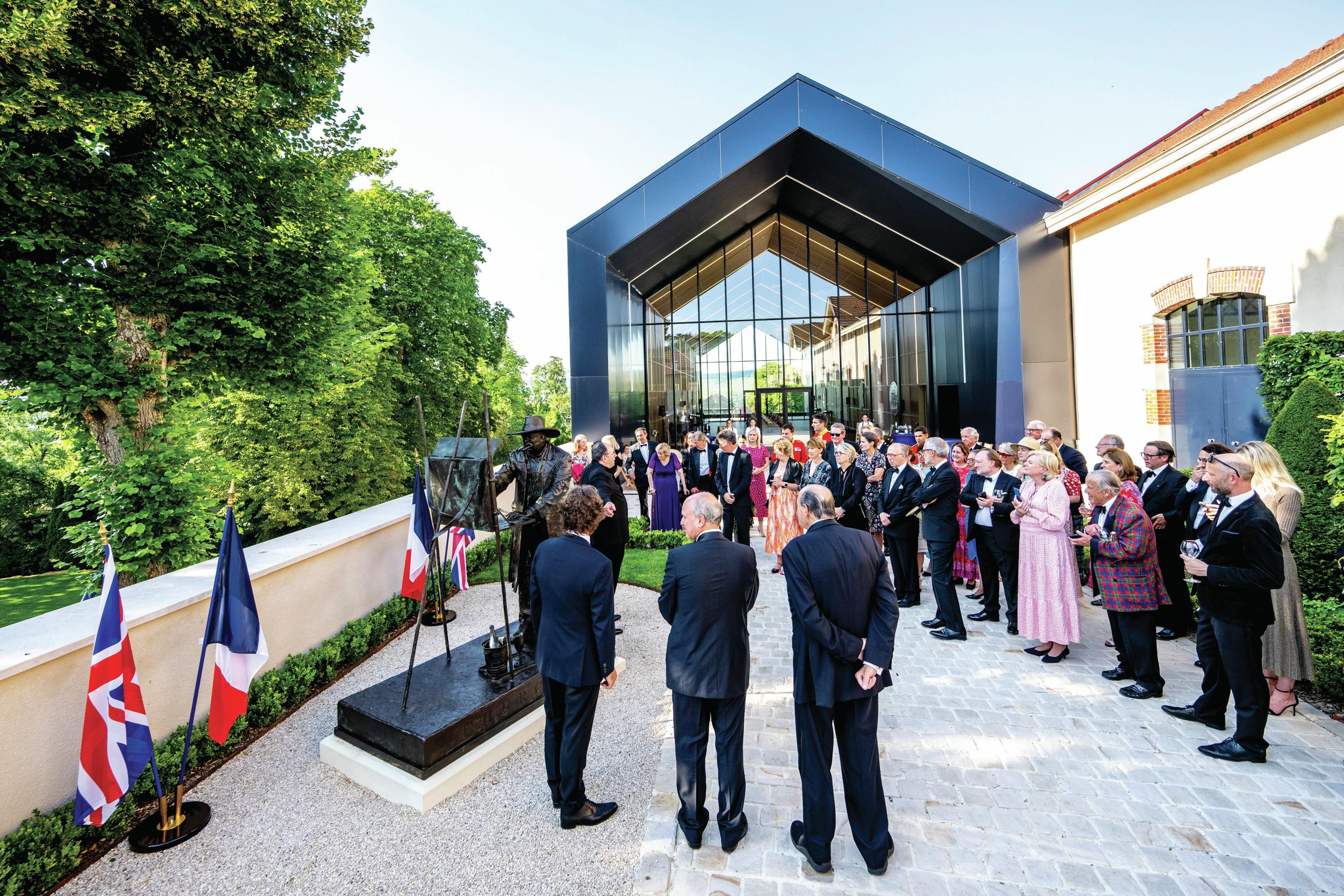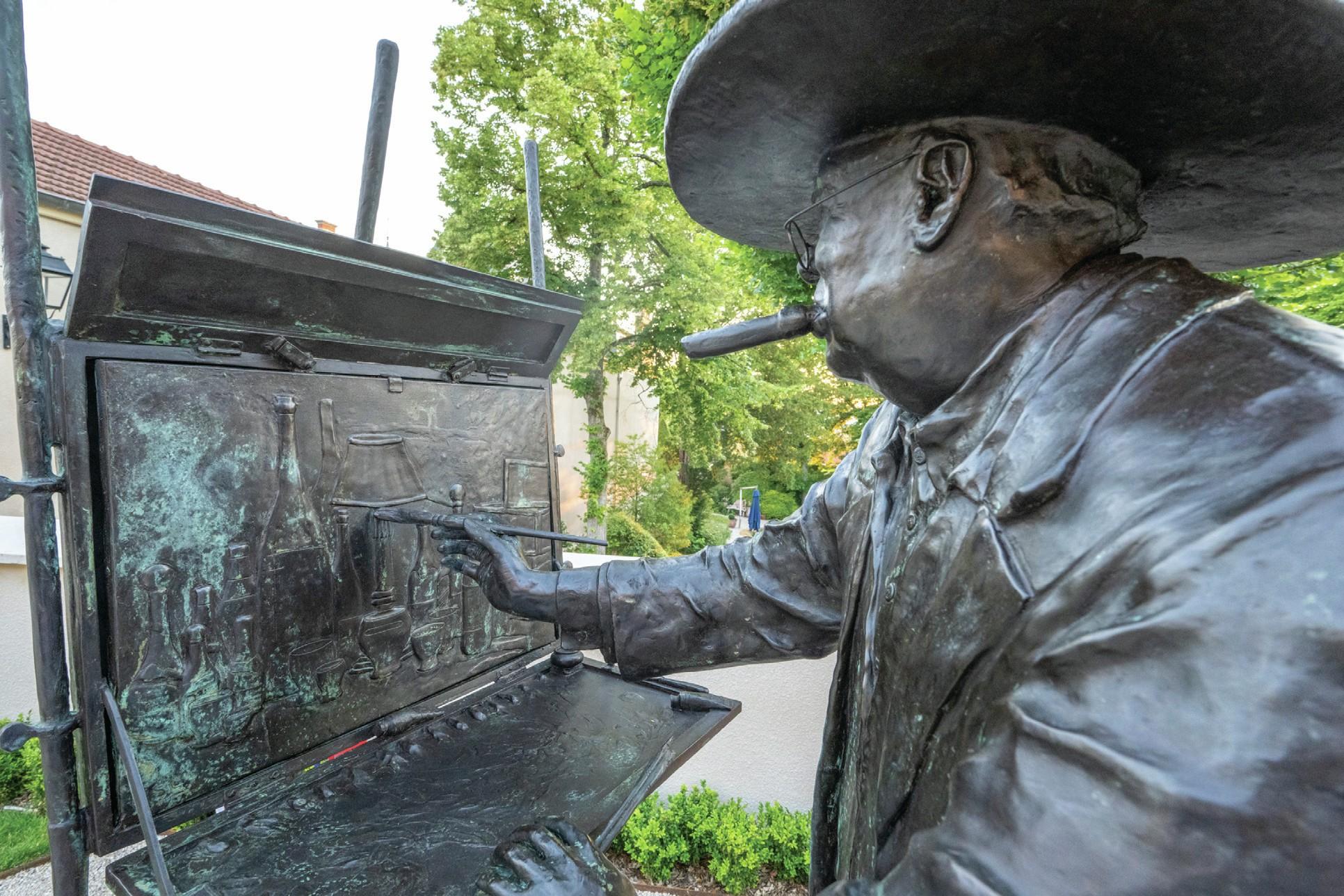Pol Roger ‘remains stronger than ever’
By db staff writerPol Roger is one of the last remaining family-owned, independent Grandes Marques. db finds out what else makes it stand out from the crowd.

Champagne Pol Roger remains completely independent and family owned, and this year has been enthusiastically celebrating what is its 175th anniversary.
Describing the landmark date, Pol Roger Portfolio managing director James Simpson MW explains: “We are one of the last remaining Grandes Marques to be completely independent and family owned, but we are also still very small.”
He corroborates this with the disclosure that Pol Roger’s “annual production has only exceeded two million bottles for the last few years”.
Indeed, there has been a lot to celebrate during 2024. In a ceremony this summer, for instance, Lord Soames, grandson of Sir Winston Churchill; Randolph Churchill, Churchill’s great-grandson; and Hubert de Billy, fifth-generation family member of Champagne Pol Roger, unveiled a two-metre-high bronze statue by Paul Rafferty of the British statesman.
The piece, set against the backdrop of the new and recently inaugurated Pol Roger building, shows the former Prime Minister in front of an easel, painting his famous Bottlescape artwork from 1926. At his feet sits a Pol Roger ice bucket in which rests Churchill’s favourite cuvée, Champagne Pol Roger Brut Vintage 1928. The event upheld the lifelong friendship that was cemented between Odette Pol Roger (wife of Jacques Pol Roger and great-granddaughter of Sir Richard Wallace) and Winston Churchill, which still endures in both families today.

Simpson explains: “Pol Roger has a particular history and affection for the UK market, which makes up about 20% of its business. In 1855, M Pol Roger, in his mid 20s at the time, began to sell a brut style of Champagne which was favoured by the English. By the late 1850s and early 1860s, Great Britain had become the premier market for his brand of Champagne and, by 1877, he was awarded a Royal Warrant by Queen Victoria.”
Looking at these kinds of historic tie ups, Simpson says that the Champagne house “counts itself fortunate to have so many friends of the brand, many of whom began drinking Pol Roger relatively early – at university, the armed forces or on first entering the professional sphere”. Obviously, the most famous example of this is Churchill, “whose first invoice from the house dates to 1908, when he was 34” – although Simpson adds that “Champagne Pol Roger is pretty sure he was drinking it long before – at Sandhurst during the time he was undergoing his officer training”.
Lasting legacy
The legacy lives on and, even today, relationships continue to be built and solidified over time.
Simpson explains that, after the world had “an extraordinary few years post-pandemic, we have returned to a more normal state of trading”, and adds that “the Champagne business is a little more challenging … We are having to work harder to sell our Champagne, although the Pol Roger brand remains stronger than ever.”
Simpson also highlights that the business remains “very lucky with the allocation of Pol Roger we receive in the UK, and [we] are proud to sell it to the top end of the trade”. But he adds: “Although a small house, Champagne Pol Roger has a terrific history and reputation, and people are attracted to something which garners some acclaim without being too overbearing, especially when it comes to its marketing.”
Simpson notes that “Pol Roger still operates with a very much ‘hands-on’ approach” and gives the example of how “four of the six full-time riddlers who still live in Epernay are employed by Pol Roger – a practice that we are proud of and champion as much as we can”.
Continuing, he describes how “everything from the hand-stacking of Champagne in the cellars, to the hand riddling of the bottles, to the hand labelling of all large formats and all Cuvée Sir Winston Churchill formats, is done with a desire to remain as close to the end goal as possible: essentially the production of outstanding Champagne”. According to Simpson, it is also worth remembering that Pol Roger is special because it “has shareholdings in various proportions in our agents in key markets”. These range from “Pol Roger Portfolio in the UK and Frederick Wildman in the US to our Italian and Japanese importers, to Pol Roger’s recently initiated joint venture for distribution in France with Joanne, giving them control of their distribution across these key markets”.
Demand for quality
What crystallises the elements that set Pol Roger apart is that demand for quality continues – and this is where the brand can showcase its iconic status.
Simpson says: “We are exceedingly fortunate to have a brand in demand amongst the consumers in the know. For the off-trade, our packaging is eye catching and iconic, and for the on-trade, the brand name allows for many restaurants to fill glasses and spread joy to the consumer.”
With this, he notes the brand’s versatility too, and highlights how Pol Roger works “with everyone from the Michelin-starred restaurants and five star hotels to gastropubs and wine bars”, adding: “One of our particular strengths being the London clubs and livery companies.”
Related news
Veuve Clicquot bets on Pinot Noir for La Grande Dame 2018
How to make top blanc de blancs in 'the kingdom of Pinot Noir'
How the wine industry is addressing labour standards in vineyards
